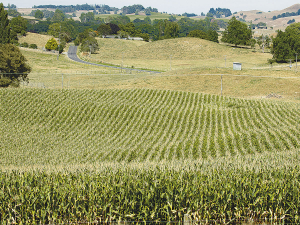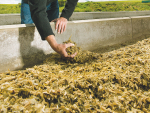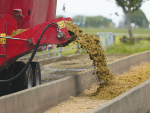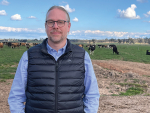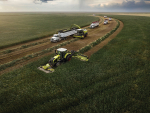Over the last decade there has been an increasing national emphasis on measuring and mitigating the environmental impacts of food production systems.
While some systems have been studied extensively (e.g. dairy), others have been studied a lot less. Maize systems fitted into this category and there were two questions that needed answering. These were:
What is the nitrogen (N) loss to water associated with a maize system?
Using the He Waka Eke Noa parameters, what are the greenhouse gas (GHG) emissions associated with maize systems?
In the last month or so, two papers published by my colleagues have sought to answer both of these questions and to provide some surety to farmers that growing a maize crop is environmentally sustainable.
Nitrogen loss to water
In 2018, my colleague Dr Rowland Tsimba1 and his Research Team began a series of experiments seeking to quantify N-loss to water from maize silage systems. Barrel lysimeters and an array of suction cups placed at soil depths of 70cm and 120cm were used to measure N-loss from a replicated plot trial. The trial grew maize in summer and during winter, some plots were planted in an annual ryegrass catch crop, while some plots were left fallow as a control. The average amount of N lost during the 2019/20 and 2020/21 seasons from each treatment was measured and the results are summarised in Table 1.
Values with a different letter are significantly different (P<0.05)
There are two things that this trial shows clearly.
A maize crop followed by a winter catch crop loses very little nitrate-N while losses are higher with winter fallow (no crop) systems.
Because it is a deep rooting crop, sampling depth is important when measuring N-loss under maize. Nitrogen loss measured at 70cm was almost three times higher than N-loss measured at 120cm.
Greenhouse gas emissions
Data was collected from 20 maize growers (grain and silage) from Northland to Canterbury OverseerFM was used to model annual GHG emissions (CO2e) for each farm for the 2020/2021 season2. There were a wide range of systems modelled, with some farms operating a winter fallow (no crop) and others growing a catch crop which was then harvested for silage. Some systems used livestock to graze a winter crop or newly established permanent pasture over winter. A summary of the results can be seen in Table 2
The modelling showed a big range in annual GHG emissions from maize systems (1,114 to 6,135 kg CO2e/ha). In systems without livestock, most emissions were associated with N fertiliser use. However, in systems with livestock, emissions were driven higher by methane from animal wintering. Farms wintering animals had emission levels two to three times higher than those which didn’t.
Some take home messages for maize growers were:
Know your number. Use one of the available tools to calculate the GHG loss for your farm.
Make sure your nitrogen application rate is appropriate. Set realistic paddock yield expectations for your maize crop and consider paddock history and soil available nitrogen levels before determining crop nitrogen inputs.
Consider the form, rate and timing of N application. Incorporate urea or apply it prior to rain where possible. Alternatively consider the cost: benefit of using urease-coated N products.
Account for livestock. If you want to reduce GHG losses from your farm, consider winter management options which do not include livestock. Alternatively take into consideration the GHG cost of animals as well as other potential co-benefits from livestock grazing when comparing gross margins and calculating grazing charges.
Ian Williams is a Pioneer forage specialist. Contact him at This email address is being protected from spambots. You need JavaScript enabled to view it.





